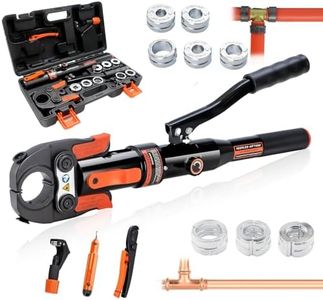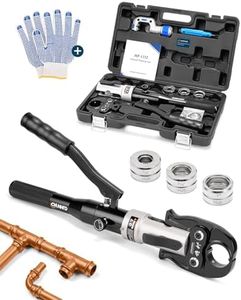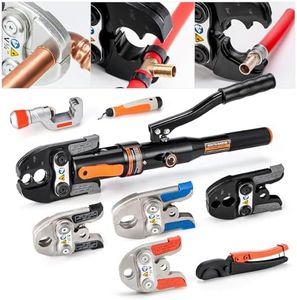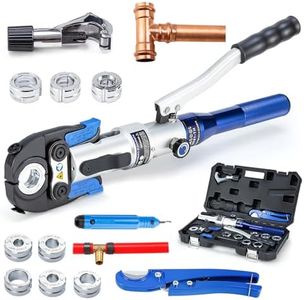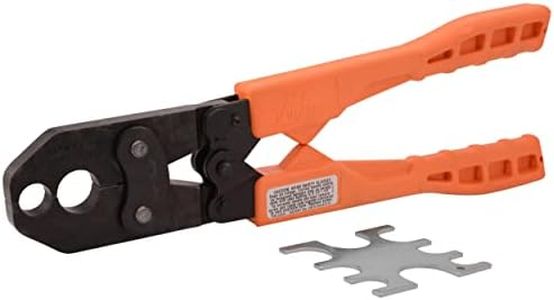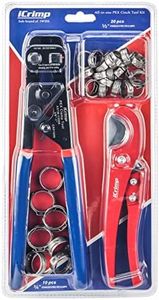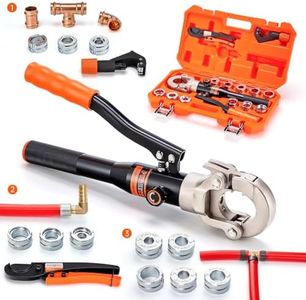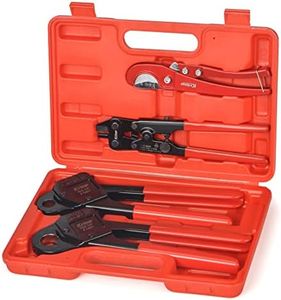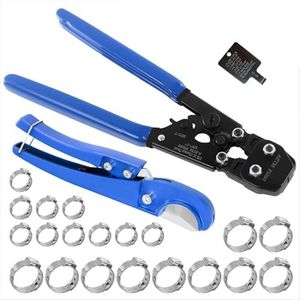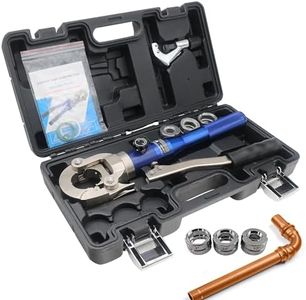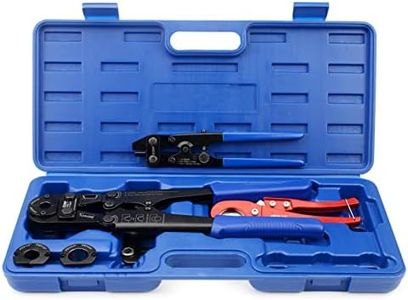We Use CookiesWe use cookies to enhance the security, performance,
functionality and for analytical and promotional activities. By continuing to browse this site you
are agreeing to our privacy policy
10 Best Crimping Tool For Pex Pipes
From leading brands and best sellers available on the web.Buying Guide for the Best Crimping Tool For Pex Pipes
When shopping for a crimping tool specifically for PEX pipes, the goal is to find a tool that delivers secure, reliable connections and is comfortable and efficient to use. Whether you’re handling a single bathroom installation or regular plumbing work, the right crimping tool will save you time, energy, and frustration. Knowing the main features and understanding how they match your needs is the best way to pick a tool that won’t let you down.Compatibility (Pipe and Ring Sizes)Compatibility refers to the range of pipe diameters and crimp ring sizes a tool can handle. Since PEX pipes are available in various common sizes (typically 3/8", 1/2", 3/4", and 1"), it’s important that your crimping tool works with the size you'll be using most often. Some tools are designed for one size while others offer interchangeable jaws for multiple sizes. If your work involves only one pipe size, a dedicated tool can be lighter and potentially easier to use. However, if you plan to tackle various plumbing tasks, a multi-size tool adds flexibility and future-proofing.
Handle Length and DesignHandle length impacts how much force you need to apply and how easy the tool is to use in tight spaces. Longer handles generally provide more leverage, making crimping easier, but may be cumbersome in confined areas. Ergonomically designed handles reduce fatigue during repetitive tasks. If you expect to use the tool frequently or work in awkward spaces, consider comfort features and handle length according to your usage patterns—compact for small spaces, longer for heavy crimping.
Jaw Quality and DurabilityThe jaw is the part of the tool that forms the crimp. High-quality, hardened steel jaws maintain their shape, apply even pressure, and last longer. Inferior materials can deform, leading to weak or inconsistent crimps, which can cause leaks. If you’re a homeowner with occasional projects, a basic but reputable jaw should suffice. For professionals or heavy users, invest in tools specifying hardened or heat-treated steel for reliability over time.
Ease of Calibration and AdjustmentCrimping tools sometimes need calibration to ensure every crimp meets the standard for leak-free seals. Some tools come pre-calibrated, while others allow for adjustments. Easy calibration features are important for users who demand high precision or will use the tool over a long period as continual use can affect accuracy. Choose a model with simple calibration features if you expect frequent use or want peace of mind about long-term accuracy.
Weight and PortabilityThe weight of the crimping tool affects comfort, especially if you’ll be moving around or working overhead. A heavier tool can be less tiring for quick jobs, but may become cumbersome with extended use. Lightweight, compact tools are ideal for home users and those working in hard-to-reach spots, while heavier, more robust models might appeal to those doing larger installations in open areas where portability is less of an issue.
Ease of Use and Additional FeaturesSome crimping tools offer extra features like a go/no-go gauge, which helps you quickly check if the crimp is correct, or quick-change jaw systems for handling different pipe sizes. These features add convenience but may not be necessary for everyone. Beginners and infrequent users might benefit from a tool with built-in guidance or error-checking features, while experienced users may prioritize speed and flexibility.
